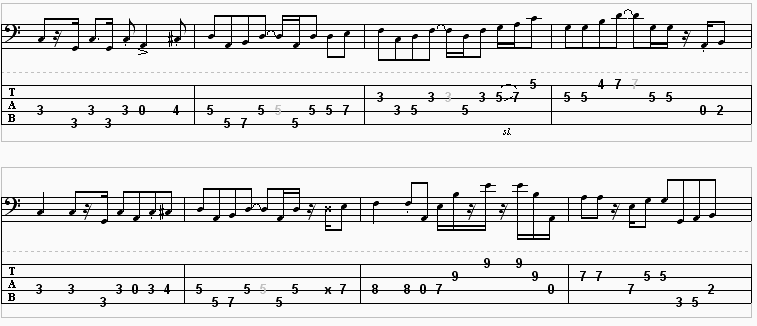Key Signature: C major
Time Signature: Standard 4/4 time
Composer – Garcia / Hunter
Where to find this song – Workingman’s Dead track # 8
Release Date – June 1970
Throughout most three decades, this band was the object of love for popular music’s most celebrated fan following — the Deadheads. Their numbers and devotion were legendary in their own right — The Grateful Dead were the ultimate cult band, and a great deal of popular bands get their stylings from this band.
Verse 1
The Verse has 3 different parts. Two rhythm guitar parts and a bouncing bass line. Here’s what they all sound like together:
You should take note that the verse is 10 measure long. The first 8 measures are in support of the the 1st verse of the vocals. The last two measure are more of a musical interlude or turnaround that prepares use for the segment of the song.
Guitar 1
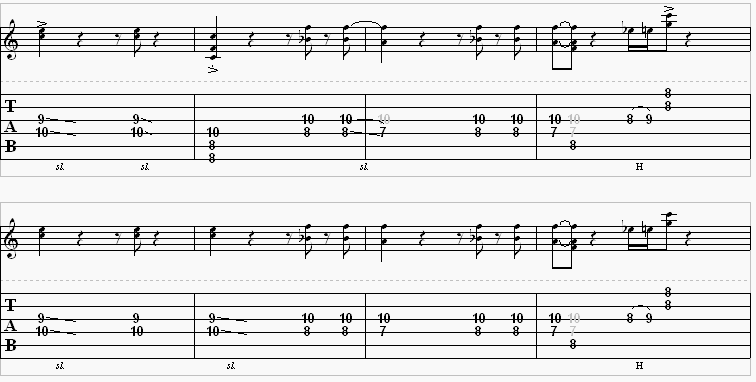

Begin by placing your 1st finger on the ninth fret on the “G” string, and your 2nd finger on the tenth fret on the “D” string. Play that once, and then just slide toward the tuning pegs a bit. Play that once again, not sliding. Go to the second measure and play what you did at the beginning once more, sliding once again. Now, for a change. Place your 1st finger on the eigth fret on the “D” string, and your 3rd or 4th finger on the tenth fret on the “G” string. Play that twice, and then use your 1st finger to move to the seventh fret on the same string, the “D” string. Move that finger back to the eighth fret again, and play that twice. Move once again to the seventh fret with your 1st finger. Play that once, and then barre your 2nd finger on the eighth fret on all strings but the “low E” string. You will be performing a hammer-on at the end of this measure. A hammer-on is when you go from a lower note to a higher note, only striking the first note(s). Hammer-on with your 2nd finger on the ninth fret on the “G” string. End the measure by playing the “B” string and the “high E” string with your 1st finger, which you barred, on the eighth fret.
The last two measures involves a nice musical turnaround. Guitar 1 at this point plays a lead line. Below in red numbers next to the tabbed notes in black are the fingerings that you’ll want to use to pull it off:

Guitar 2
This guitar is a stratocaster style guitar with a very clean sound. To learn to play it we don’t even need tab. We can follow along with a chord chart because a majority of the part is just an interplay between two chords: C and F.
Keep in mind that these are barred versions of the chords. The C chord is played with an A style barre chord on the 3rd fret (root on the A string). The F chord is a modified version of the E style barre chord on the 1st fret (root one low E string). The only difference here is that we omit the B and high E strings while strumming the chord.
Here’s what these two chords look like:
C
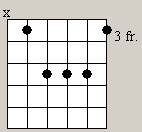
F
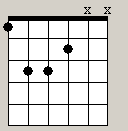
Some other things to keep in mind when learning this part is the extensive use of staccato. This means we’ll end the note very abruptly. It’s signified by a little dot bellow the note. To get the staccato like sound we’re looking for be sure to use all downstrokes when playing the chords. Come down on the strings with your pick with a little force, but then muffle out the chord with your wrist on your picking hand right after you’ve sound the chord. This will allow you to end the notes abruptly.
When you see a slash through the note you should play it as a muted chord. You’ll strike the strings like you normally would, but you’ll mute the strings with your fretting hand. Instead of sounding notes you’ll produce a percussive sound.
Also, in the 4th measure you’ll notice that the last two notes played are not chords at all. The circled 5 means the 5th string (A string) and the circled 6 means the 6th string (low E string). Next to them are “3fr.” and “5fr”. This means we should play the notes on the frets of the corrosponding strings. Easy enough.



Bass Guitar
Many of you guitar players will probablly try to skip over this part, but I think you should try to learn it anyway. You don’t even need a bass guitar. You can learn to play it on your 6 string guitar. The 4 strings on the bass guitar are the same as the bottom 4 strings on the guitar: E,A,D,G.
In my opinion this part kicks butt. It really adds movement to the entire piece. Since it’s in support of mainly a two chord change (C,F) it bounces lot between the root note and 5th of each chord. You’ll notice that in the 1st measure where the guitar is playing a C chord, the bass mostly alternates between the root (C on the 3rd fret of the A string) and the 5th (the G on the 3rd fret of the low E string). It does this throughout the part.



Chorus 1
The Chorus has 3 different parts. Two rhythm guitar parts and a bouncing bass line (we’ll learn the 1st rhythm guitar part tommorrow). Here’s what they all sound like together:
Guitar 1
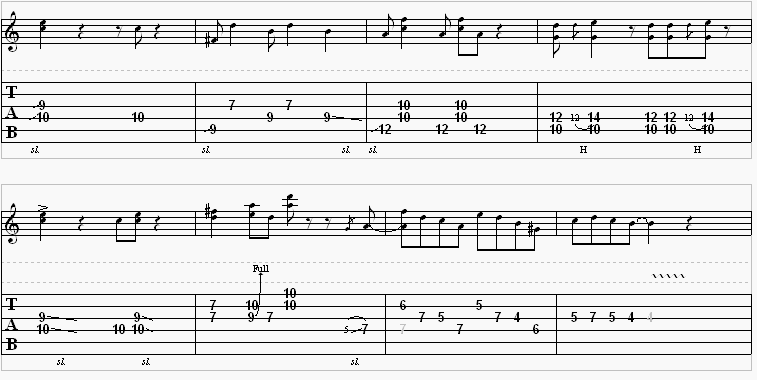
Guitar 2
There are a couple of new chord forms presented here that were not in the 1st verse. Here they are:
F
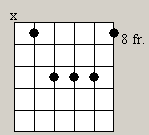
G (type 2)
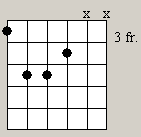
E7
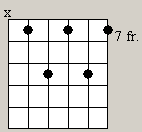


Bass Guitar
Many of you guitar players will probablly try to skip over this part, but I think you should try to learn it anyway. You don’t even need a bass guitar. You can learn to play it on your 6 string guitar. The 4 strings on the bass guitar are the same as the bottom 4 strings on the guitar: E,A,D,G.
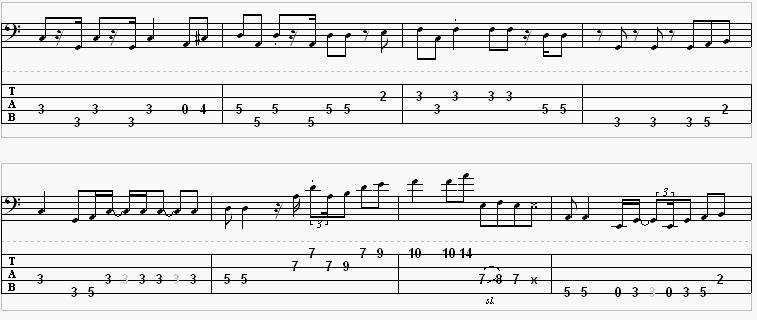
Chorus 2
The Chorus has 3 different parts. Two rhythm guitar parts and a bouncing bass line . Here’s what they all sound like together:
Guitar 1
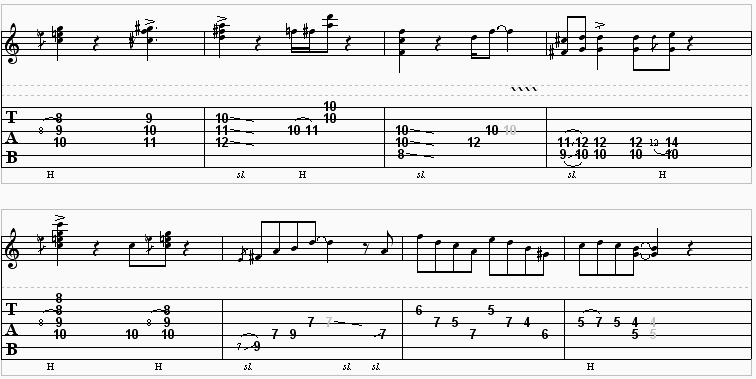
Guitar 2
You can simply strum along with this guitar. The chord progression begins on a C chord then “walks up” to a C# briefly before it gets to a D chord. Then comes F, G, C, D, then F, E, Am, G in the two measure turnaround at the end. Give it a try!
Bass Guitar
Many of you guitar players will probablly try to skip over this part, but I think you should try to learn it anyway. You don’t even need a bass guitar. You can learn to play it on your 6 string guitar. The 4 strings on the bass guitar are the same as the bottom 4 strings on the guitar: E,A,D,G.
